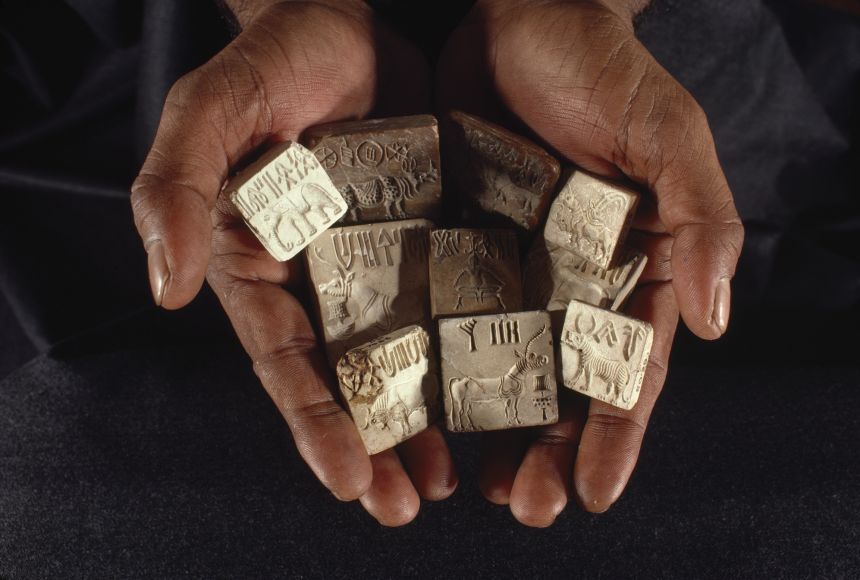Humans have lived in cities for around 5,000 years. These cities were unlike modern cities but still organized places meant for many people to live together peacefully. So, what was life like in the earliest cities created by humankind? For centuries, archaeologists and historians have studied this subject. Using modern technology, scientific explorers have discovered some answers. Looking at one example of an early civilization, the Indus Valley Civilization, offers insights about early urban life.
Ancient Urban Community in Modern-Day India and Pakistan
The Indus Valley civilization was around from about 3300–1700 B.C.E., roughly 5,320 to 3,720 years ago. Also known as the Harappan civilization, the Indus Valley civilization was one of the world's earliest urban civilizations. At the same time, the civilizations of ancient Mesopotamia, Egypt, and China were also thriving. The Harappan civilization was located in South Asia, in what is now Pakistan and northwest India. Harappans built their civilization along the flood plain of the Indus River.
Although the Harappans had a written language, scholars today cannot decipher the Indus script. As a result, most of what is known about Harappans comes from the ruins of their two largest cities: Harappa and Mohenjo-daro. Both cities cover less than 2.6 square kilometers, or one square mile. This is much smaller than modern cities. In the United States' New York City, Central Park alone has an area of 1.3 square miles. The cities had an estimated population of around 40,000 each.
The Harappan cities did not have palaces or temples, and there is no evidence they were ruled by kings and queens. Elected officials or other elites may have acted as rulers.
The cities were located about 644 kilometers, or 400 miles, from one another and were similar in layout. Each city was laid out in a grid-like pattern, and important buildings were positioned along a north-south axis. Scholars believe the Harappans used the position of the rising sun and moon to determine their cities' geography. Each city had a citadel mound complex. These complexes, which included a range of public buildings, were much like modern town squares. Both cities also had a lower city for personal homes.
The citadel mound complex at Mohenjo-daro included the Great Bath for ritual bathing, a granary to store grain, housing, and assembly buildings. Brick towers and a wall protected the complex against flooding and invasion.
One significant feature of Harappan cities was their advanced systems for supplying water and removing waste. In Mohenjo-daro, about 700 wells supplied water to the city's buildings.
Inside the Home
Most houses in the lower town had private bathrooms, and many had wells. Bathrooms were usually placed against the outside wall of a house. This allowed the bath and toilet to discharge waste into the city's complex network of underground sewers. Cesspits enabled the system to dispose of waste that traveled long distances.
Harappan houses were typically constructed from sun-dried bricks, and varied in size. Some houses had only one room while others were larger with multiple stories. In addition to housing, the lower town held workshops where artisans (like dyers and potters) worked.
Wheat, barley, and rice were staples of the Harappan diet. The Harappans grew and ate a variety of vegetables and fruits. Cattle, chickens, and other animals, including some wild animals, provided meat. Harappans also consumed seafood.
Harappans used clay or terra-cotta pots, bowls and other vessels for cooking and storing food. Some vessels were handmade, but others were manufactured with a pottery wheel. Additionally, the Harappans made cookware from copper and bronze. These artifacts demonstrate Harappans' skills as metal-workers.
Significant Finds
One of the most significant discoveries from Mohenjo-daro is a 10-centimeter (four-inch)-tall bronze sculpture of a dancing girl. The sculpture is significant because it indicates Harappans used dance for art or entertainment.
Merchant seals or emblems, carved from the mineral talc, are among the most common Harappan artifacts. The seals had images of animals or other decorations. They were likely used by merchants for sending and receiving packages. The seal was a symbol and its mark proved that the package was sent by a particular merchant. One famous seal depicts the god Pashupati. This may have been an early representation of the Hindu god Shiva, who is known as "The Destroyer."
Some Indus Valley seals have been found in Mesopotamia, indicating that Harappans traded with other civilizations. The Indus Valley civilization was part of a trading network that included Afghanistan, Iran, and Oman. The Harappans were among the first civilizations to develop a system of standardized weights and measurements. This may have been helpful for trade and tax collection.
Archaeologists continue to investigate the Harappan civilization. Since 1986, excavations have resulted in many important discoveries. Artifacts are displayed at the National Museum in New Delhi, India, and in museums throughout the world.

